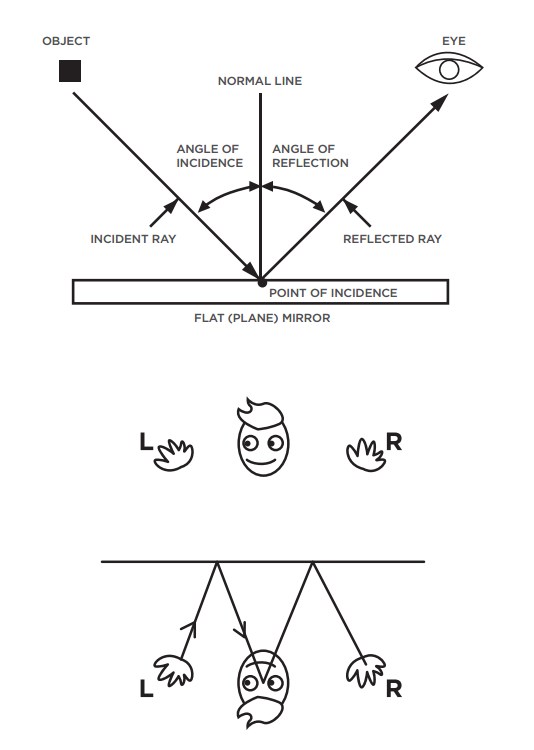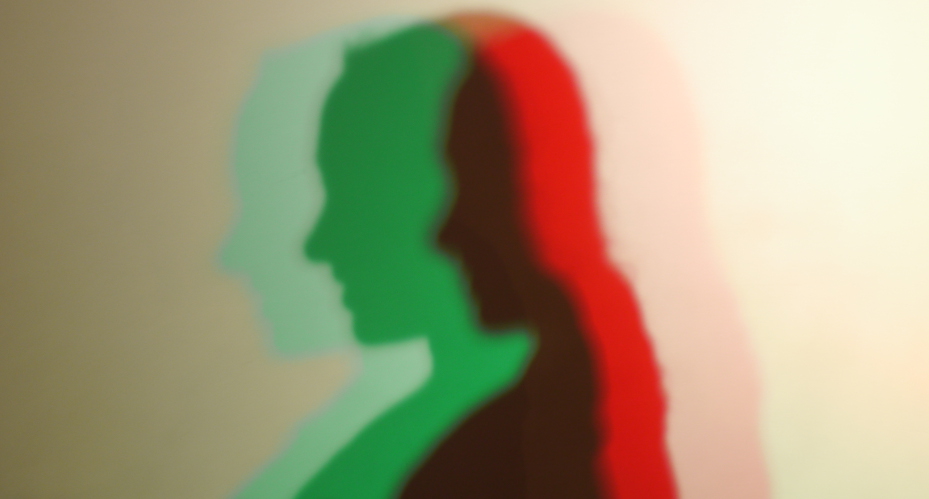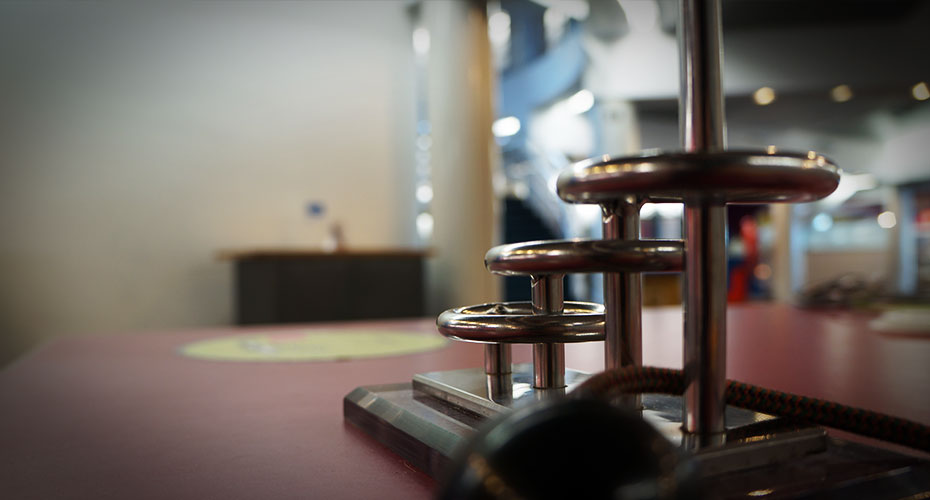Have you ever noticed that the way you look in photographs is different from the way you look in the mirror? That’s because a photograph is a true image, while your reflection is a mirror image.
This activity gets students exploring their own reflections and thinking about how they can see themselves.
When light from an object hits a flat, shiny surface, nearly all of it is reflected (bounces back) in a predictable way. The light bounces back at the same angle it came in at. When your eye catches the light, it appears as though it came from behind the mirror.

When you look in a flat mirror, you see a reflection of yourself that is the same size as you but reversed.
Right and left are reversed in the image because a light ray coming off your right hand bounces off the mirror, and into your eye. To your eye and brain, the light ray appears to have come from the left hand of someone who looks just like you, standing on the other side of the mirror. Because the image is “behind” the mirror, your right hand is their left one.
Ponder this: we may describe a reflected image as “switched from side to side”. But really, a mirror only changes the direction the object is facing into and out of the mirror. That is, back to front or front to back .



